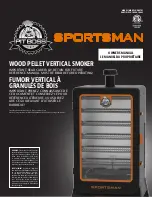
• Near a decorative object, door, light fitting,
window moulding etc., that may prevent
smoke from entering the Alarm.
• Surfaces that are normally warmer or colder
than the rest of the room (e.g. attic hatches).
Temperature differences might stop smoke
from reaching the Alarm.
• Next to or directly above heaters or air
conditioning vents, windows, wall vents etc.
that can change the direction of airflow.
• In very high or awkward areas (e.g. over
stairwells) where it may be difficult to reach
the Alarm (for testing, hushing or battery
replacement).
• Locate the Alarm at least 1m (39”) from
dimmer controlled lights and wiring as some
dimmers can cause interference.
• Locate Alarm at least 1.5m (59”) and route
wiring at least 1m away from fluorescent
light fittings as electrical “noise” and/or
flickering may affect the unit.
3. Fire Safety Advice
When using household protective devices, basic
safety precautions should always be followed,
including those listed below
• Please read all instructions.
• Rehearse emergency escape plans so
everyone at home knows what to do in case
the alarm sounds.
• Use the Alarm Test Button to familiarise your
family with the Alarm sound and to practice fire
drills regularly with all family members. Draw
up a floor plan that will show each member
at least 2 escape routes from each room in the
house. Children tend to hide when they don’t
know what to do. Teach children how to escape,
open windows, and use roll up fire ladders and
stools without adult help. Make sure they know
what to do if the alarm goes off.
• Constant exposures to high or low
temperatures or high humidity may reduce
battery life.
• Nuisance alarms can be quickly silenced by
fanning vigorously with a newspaper or similar
to remove the smoke or press the test / hush
button.
• Do not attempt to recharge or burn the
battery, as it may explode.
• If it is necessary to remove the battery
for separate disposal, handle carefully to
avoid possible eye damage or skin irritation if
battery has leaked or corroded.
• To maintain sensitivity to smoke, do not
paint or cover the Alarm in any manner; do
not permit any accumulation of cobwebs, dust
or grease.
• If Alarm has been damaged in any way or
does not function properly, do not attempt
preclude ceiling mounting. It is considered to
be the responsibility of the installer/client to
determine if the presence of asbestos in the
ceiling material would make ceiling mounting
‘impractical’.
Figure 3a
On a Sloping Ceiling
With a sloping or peaked ceiling install a
Smoke Alarm within 610mm (24”) of the peak
(measured vertically). If this height is less than
610mm (24”) the ceiling is regarded as being
flat (see Figure 4).
Figure 4
SMOKE ALARMS
<610mm (24”)
APEX
x
x
Locations to avoid
DON’T place Smoke Alarms in any of the
following areas:
• Bathrooms, kitchens, shower rooms, garages
or other rooms where the Smoke Alarm may
be triggered by steam, condensation, normal
smoke or fumes. Keep at least 6 metres (20ft)
away from sources of normal smoke/fumes.
• Locate away from very dusty or dirty areas
as dust build-up in the chamber can impair
performance. It can also block the insect screen
mesh and prevent smoke from entering the
smoke detector chamber.
• Do not locate in insect infested areas.
Small insects getting into the smoke detector
chamber can cause intermittent alarms.
• Places where the normal temperature can
exceed 100°F (38.7°C) or be below 40°F
(4.4°C) (e.g. attics, furnace rooms, directly
above ovens or kettles etc.) as the steam
could cause nuisance alarms.
5






























